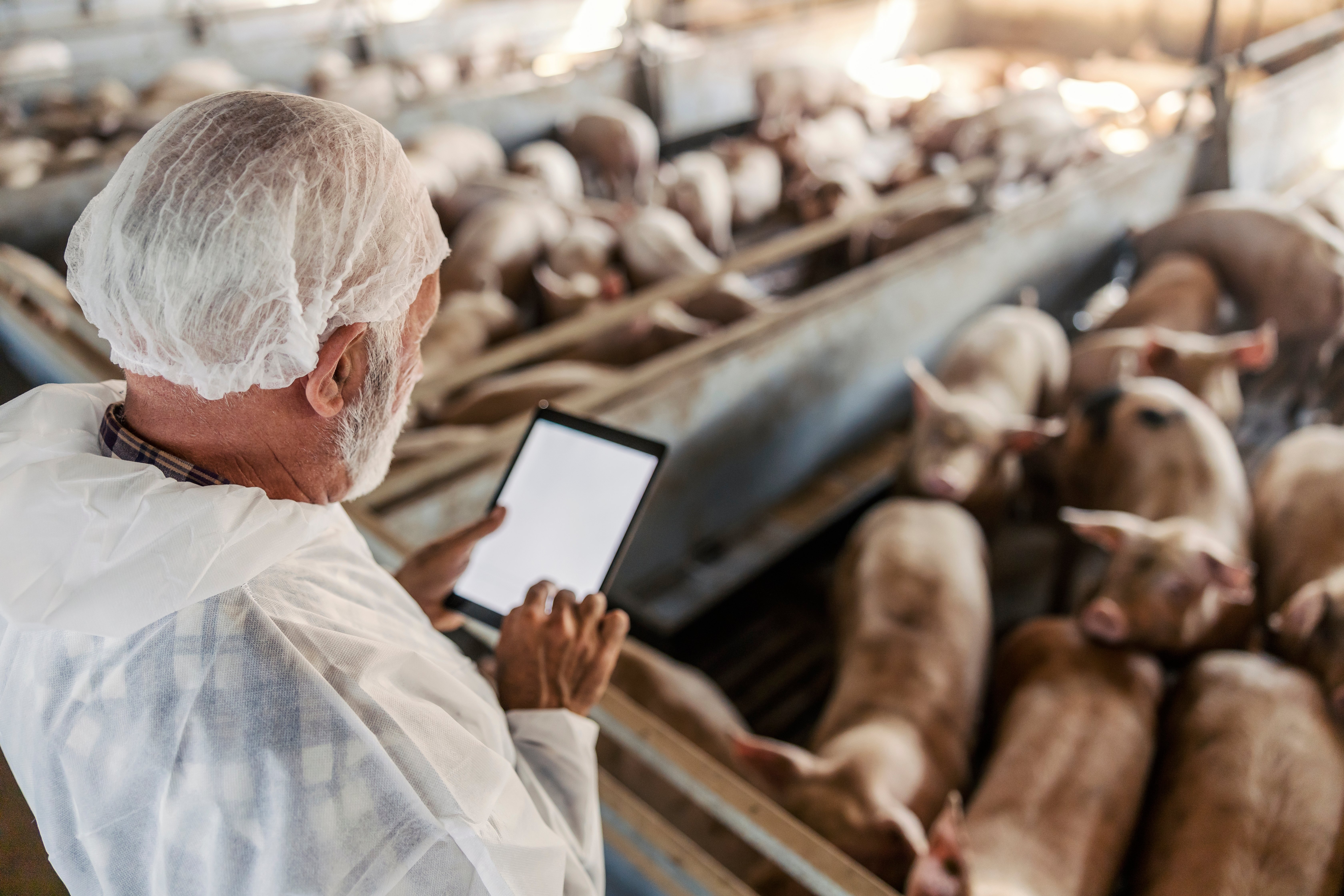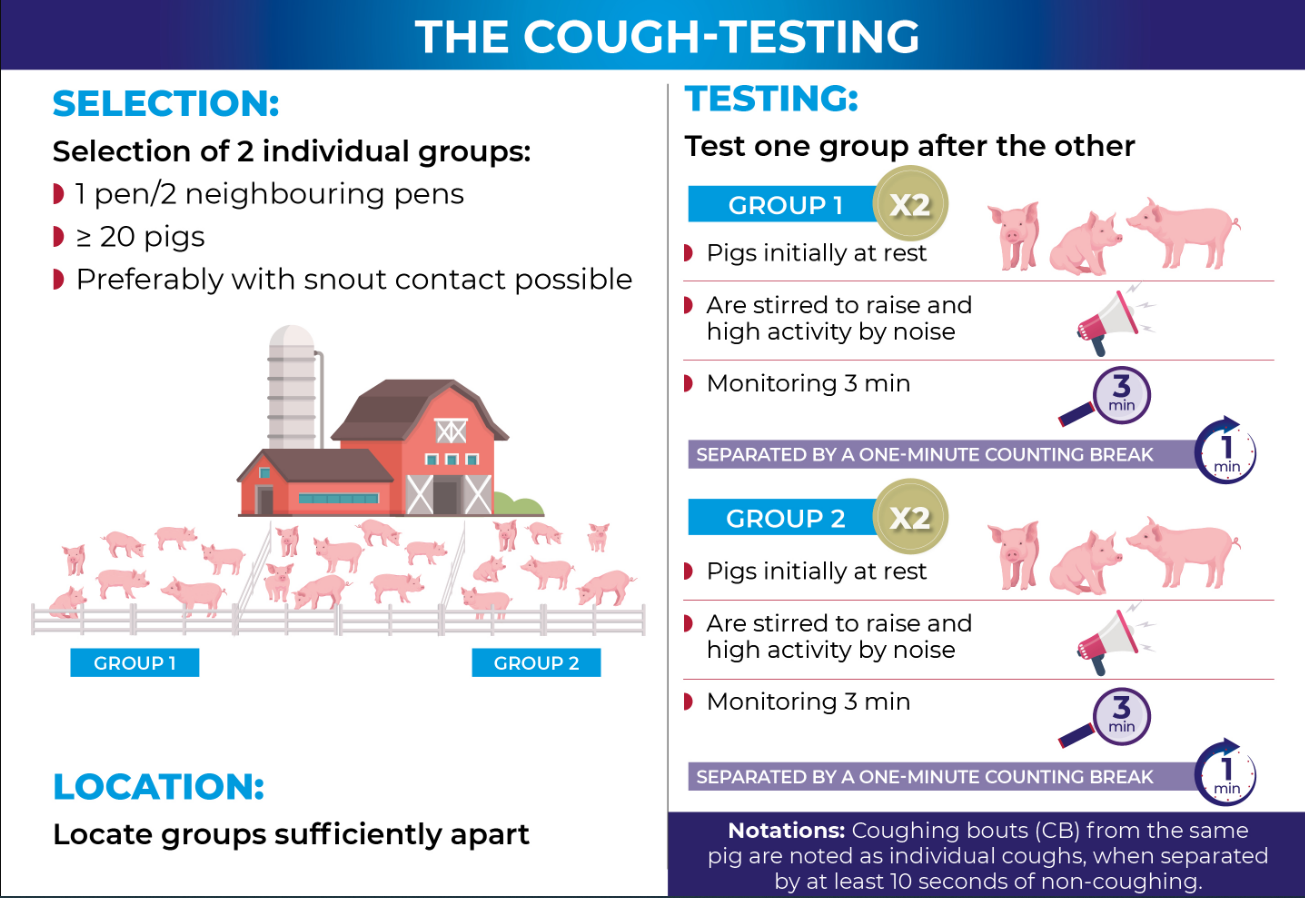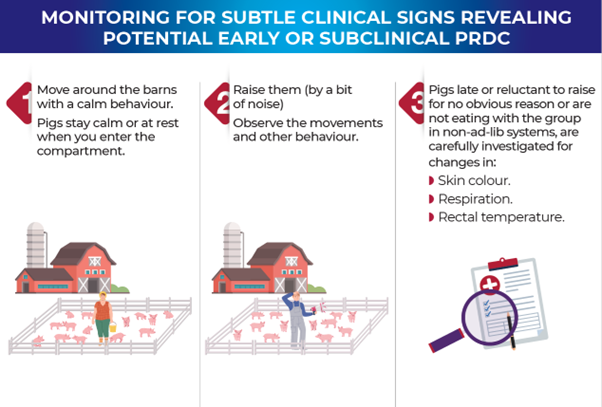The best treatment is the early treatment. This is as relevant to porcine respiratory disease as to any other disease. The later the initiation of treatment in the cause of disease, the greater the suffering, tissue damage, and losses of productivity, and the longer the period of antimicrobial treatment, and restitution.
For that reason, cough index monitoring as well as proper clinical evaluation of each pig at least once daily, preferably twice, are key tools in the battle against PRDC. Both for timely, correct treatment and as a foundation for healthy decisions on management and vaccination schemes.

Coughing index (CI) monitoring ad modum Bahnson1 and Natheues2
The target group(s), the timing in age, and the frequency in these selected groups should be adapted to the PRDC profile of the individual farm.
It is recommended to, at least, cover from days before the usual starting age of coughing until the end of treatment in sufficient intervals. It could also be a regular standard procedure once a week, or once a day in each compartment, combined with the general clinical evaluation.
The cough-testing of a section/air space/batch:
Two individual groups of pigs of each ≥ 20 pigs in one pen or two neighbouring pens, preferably with snout contact possible are selected. The two groups are located sufficiently apart, inside the same airspace, and tested two consecutive times and one group after the other.
The pigs, initially at rest, are stirred to raise and high activity by noise (shout, clapping of hands etc.) at the start of each of the two consecutive cough-monitoring’s. Each monitoring period lasting 3 minutes separated by a one-minute counting break. More coughing bouts (CB) from the same pig are noted as individual coughs, if they are separated by at least 10 seconds of non-coughing.

Calculating the CI
CI = average % of pigs coughing per minute of observation
CI = Total number of CB x 100% / (number of examined pigs x total time of observation (min))
Example: CI = 24[CB] x 100%/(40 [pigs] x 12 min) = (2400/480)% = 5% (of pigs coughing/min)
Evaluation of CI1
A CI ≥ 2.0% should be considered high but will vary with the PRDC status of the farm and the timing in relation to clinical disease, and outbreaks, and the degree of success in vaccination against diseases present at the farm. However, any cough is principally a sign pigs are not in optimal health. For that reason target-CI should be zero, or as close to as possible.
Daily monitoring for other clinical signs of respiratory disease
As commonly, not the early stages, and not all cases of respiratory disease are accompanied by coughing, a sufficient monitoring of clinical respiratory disease will have to include other parameters.
Monitoring of respiration:
Increased frequency and altered physical appearance like abdominal breathing, “sitting dog” posture etc.
Monitoring of skin colour:
Greyish to bluish skin colour either all over or on ears, snout, legs, and/or tail is indicative of decreased pulmonary function and poor oxygen uptake and intoxication severe bacterial infection (sepsis).
Daily monitoring for subtle clinical signs revealing potential early or subclinical PRDC
We would like to identify respiratory diseases in the very early stages, usually before they become clearly clinically apparent, to have the highest success in treatment and the least losses. In these tasks the subtle clinical signs of initial reduced pulmonary function and initial increase in rectal temperature (>39.6oC).
Move around the barns with a calm behaviour so that pigs stay calm or at rest when you enter the compartment. At your arrival to each pen, raise them by a bit of noise directed towards the pigs in focus, and observe their movements and other behaviour.

Pigs late or reluctant to raise for no obvious reason, or not eating with the group in non-ad-lib systems, are carefully investigated for small changes in skin colour, and respiration. Also, these pigs are approached carefully and calmly for measuring of rectal temperature with an electronic thermometer. In the early stages of respiratory disease, with no or few apparent clinical signs rectal temperature can often be elevate to even quite high levels, like 40-41oC.
Knowing the on-farm PRDC challenges
Know and monitor the present, but also the prevailing respiratory diseases at the different ages and production stages to institute the best early treatment other diagnostic procedures are recommendable:
- Slaughterhouse lung lesion investigation and scoring, like the Ceva Lung Program (CLP).
- ELISA and/or PCR testing on cross-sectional samples of serum (blood), oral fluids (saliva), or nasal swabs.
- Post-mortem investigation of dead pigs.
References
1 Bahnson, AASV Proc 24 (1993) 701 – 705.2 Nathues et al., Vet Jour 193 (2012) 443-447.
3 Danish Slaughterhouses (in Danish) Luftvejssygdom hos slagtesvin del A: Hoste og sero-reagenter i 95 besætninger. Meddelelse 673 (2004)
